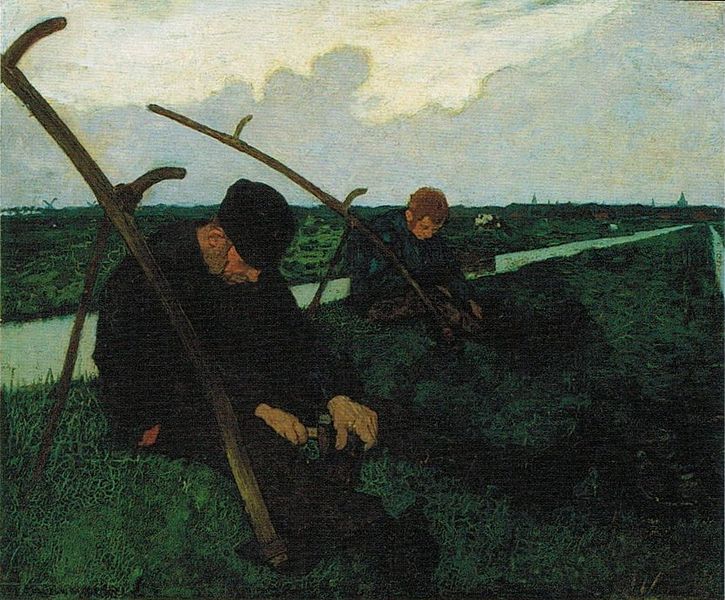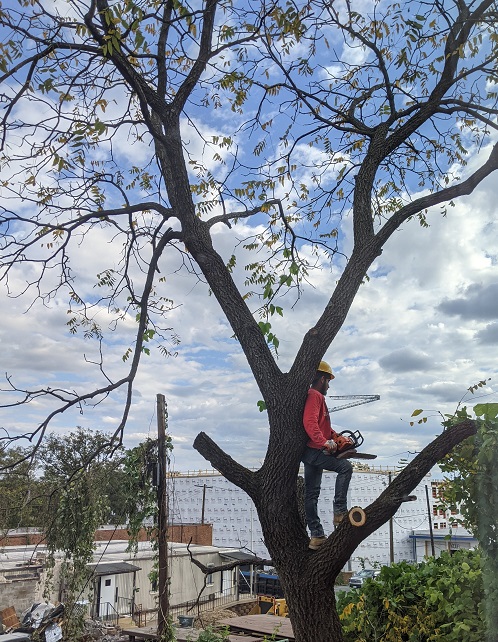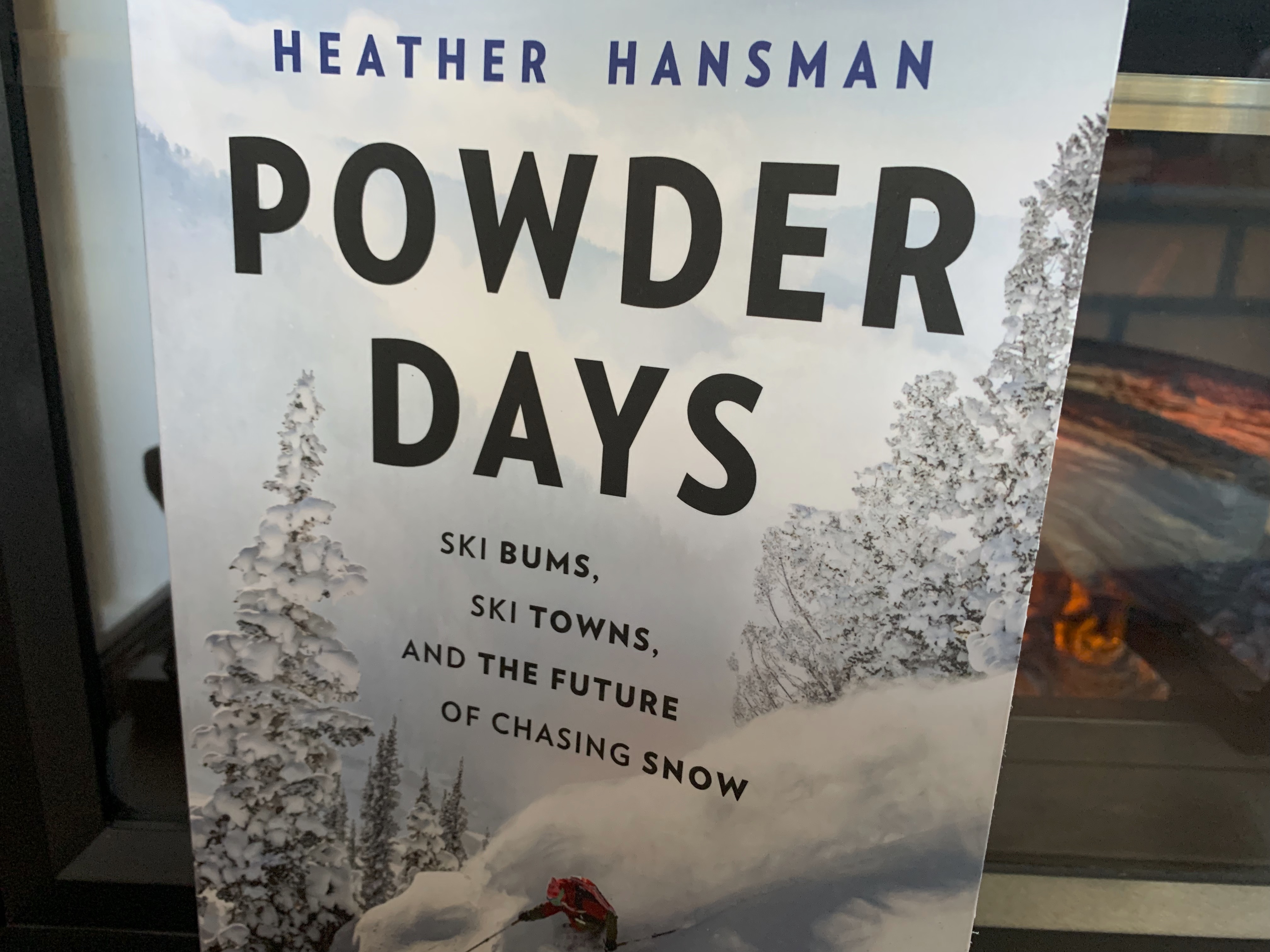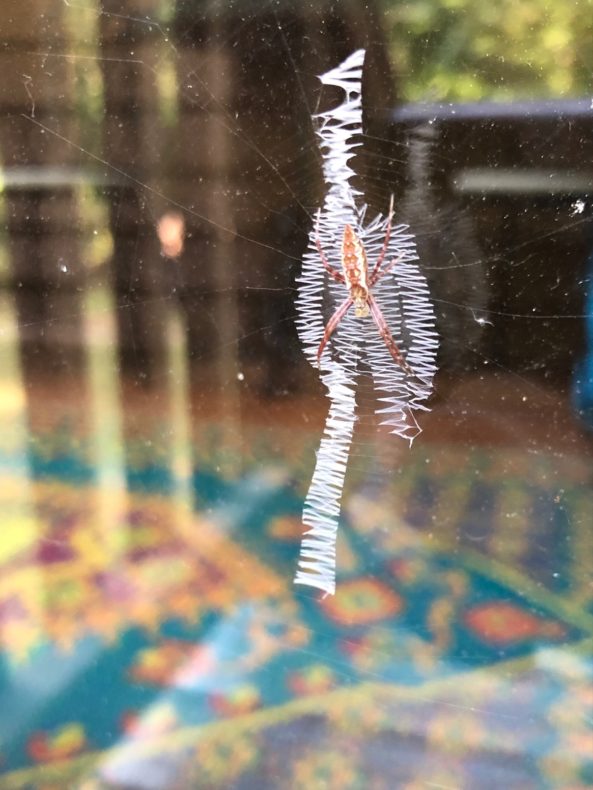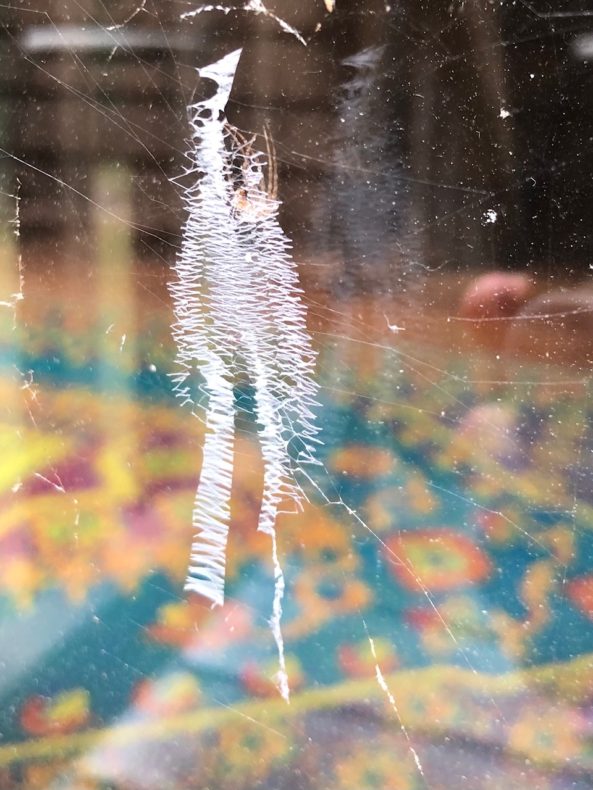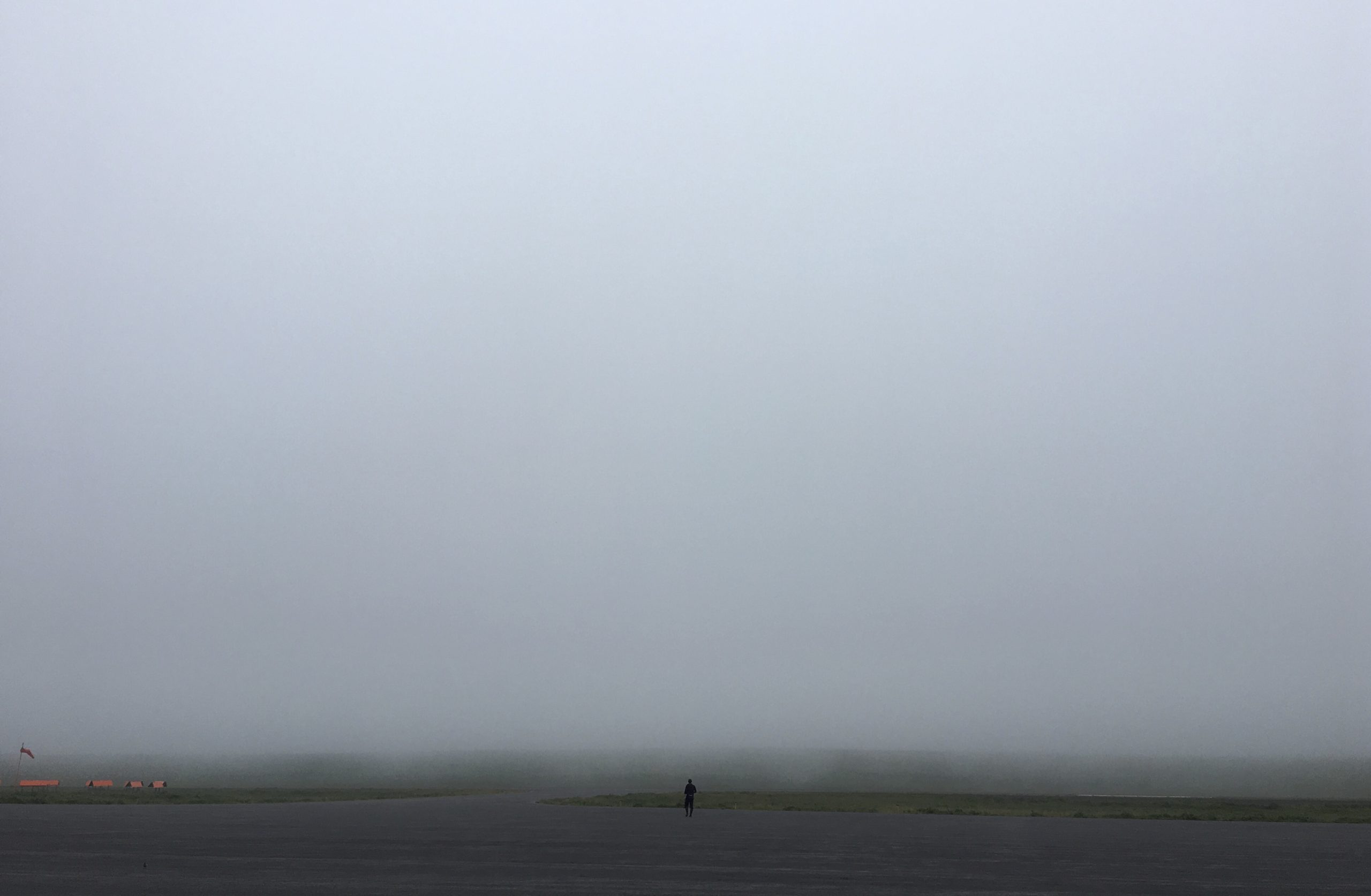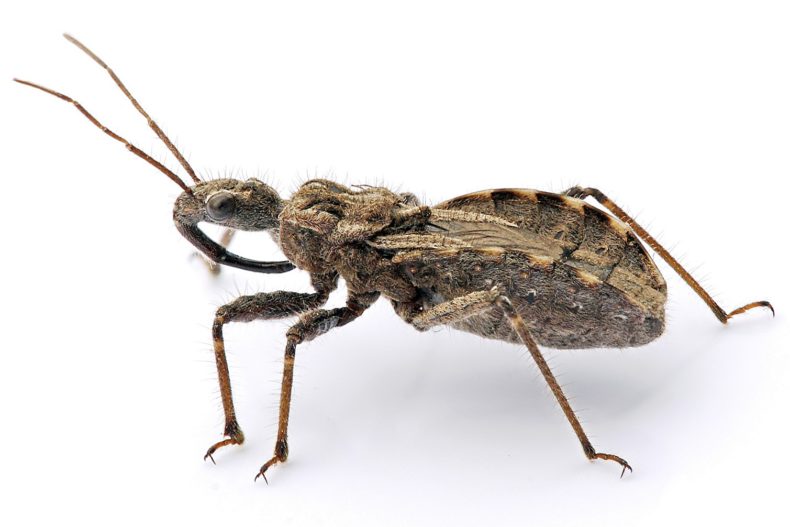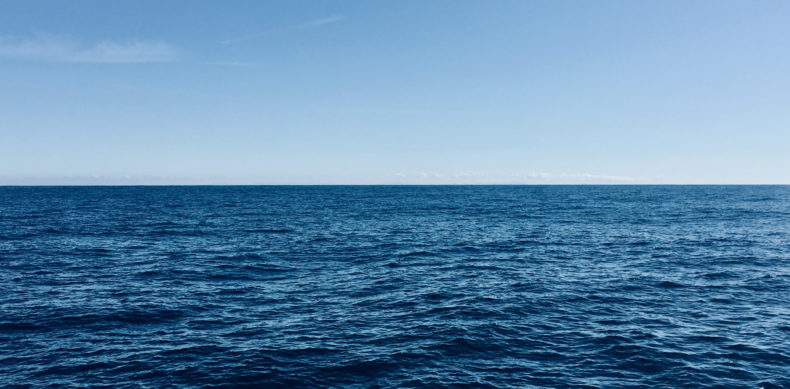The last time I wrote for this blog, I mentioned the black walnut close to my window. It wasn’t the closest tree to my apartment – that’s a catalpa that grows long beans and screens the morning light for me – but it was the second closest, and the walnuttiest. I wrote:
I just recently realized that the bonk! rolllllll sound I’ve been hearing in the fall for years now was black walnuts falling on the roof. This time next year the tree and the empty apartment building will be gone, replaced by something new.
I scheduled the blog post for 4 a.m on my appointed day.
Later that day, a Wednesday morning, I was in a video call. I’d just been asked a question and was thinking about it, slowly, when I realized I was hearing something from the yard next door. The person on the other end of the call could hear it, too. After the meeting I got up and checked: A guy in a bright orange vest was standing in the middle of a weedy curtain of vegetation next door, several feet off the ground, wielding a chainsaw.
The workers didn’t start with my black walnut. First they tackled the mass of green, some combination of weedy trees and kudzu, that ran between the two lots next door. Every time I got up from my desk to check, more was gone. They cut branches and pulled down vines. An excavator turned up to demolish the concrete block building I’d been looking at for 14 years. It was no great loss for aesthetics, but it was my view, and it was changing.
By the time they left, there was a huge gap in the vegetation wall.
Thursday morning, they were back. They took down a different tall black walnut, one heavy chunk at a time. Then another big tree.
Friday morning, the workers weren’t there. When lunchtime came and went, I thought my tree had gotten a weekend reprieve. But, a little before 3, one of the workers threw a rope up and over the lowest big branch. His colleague climbed up and pulled the chainsaw after him. As I watched over the next half hour, he shinnied along the limbs, cutting off more and more pieces. He cut off the part of the tree that reached toward my window and I heard it scrape down the side of my building.
I expected to be sadder. I’d known this was coming for a long time. I’d first heard about the new development next door three years ago, at a community meeting. During this year and a half of working from home, I’ve enjoyed the tree through the seasons—the way the hallway window framed its leaves, the way mushrooms grew on a branch after a couple of wet weeks this year. There’s clearly not enough housing, and that lot next to me is as good as any place for people to live.
In the last days of my black walnut’s life, I kept the windows open as much as I could, and it kept reminding me why trees are so nice. A downy woodpecker was on one of the big limbs, silhouetted against the sky. Later its quiet thud-thud-thud-thud-thud reached me at my desk. I heard a female cardinal chipping amicably and looked out to see her one of the branches. A pair of house sparrows hopped through the twigs, chirping.
I missed the last cut of the tree – I was learning about COVID vaccine outreach from a researcher in Michigan when they brought down the trunk and dug up the stump. When I looked out after my Zoom call, the area was just dirt. I suppose the tree will live on as wood chips somewhere.
Living in a city, any encounter with wildlife feels like a blessing. In the last few weeks several more trees came down, on another lot, for a different much-needed apartment building. My catalpa, the tree still screening my window, is like an island now, the tallest green thing around. On a recent morning a downy woodpecker stopped by to probe the trunk for food, and a starling and a white-throated sparrow. Another time I heard a squirrel fussing and looked out–I tell myself it’s the same scared youth, and I’m glad that it’s still alive a month after my little urban jungle was cleared.
Photo: Helen Fields
